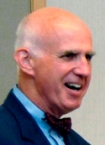October 2, 2008
Legislative Update
Congress Prepares Omnibus Funding Bill for 2009 Spending
With the start of the 2009 fiscal year looming at the end of September and the date for adjournment of the current legislative session not far behind in early October, Congress passed an omnibus continuing appropriations bill that would carry FY09 spending into March 2009 at the 2008 spending levels for most federal agencies, including the National Endowment for the Arts. Extending the date for the continuing resolution well into the next calendar year allows Congress to postpone any budget negotiations—and possible changes in spending priorities—until a new president takes office. The House approved the spending bill on September 24 and the Senate followed with a vote to pass on September 27.
The Democratic leadership on Capitol Hill was anxious to avoid a replay of last year’s battles over the budget’s bottom-line spending. President Bush had made known his intention to veto any spending bill with total dollars above the amounts proposed in the administration’s budget plan sent to Congress in February. A budget stalemate between Congress and the administration created by the insistence of legislators to set their own spending priorities with increases above the president’s spending levels, as well as a continuing debate in Congress about off-shore oil drilling tied to spending legislation, left the appropriations bills far from enactment as the new fiscal year drew closer. A continuing resolution settles the issue for the moment and lets legislators go home to campaign for the November elections.
Only one appropriations bill had gone for floor votes in the House—the funding for military construction and veterans affairs—and none in the Senate. The appropriations committee in either chamber had not even completed work on drafting all the individual appropriations bills under its responsibility. The funding bill for the Department of the Interior—which includes money for the National Endowment for the Arts—had moved no further than the House Appropriations Subcommittee, which approved an increase in arts funding from $144.7 million in 2008 to $160 million for 2009. The Senate had taken no such action on the measure, which leaves the arts funding at the 2008 level in the continuing resolution.
House Panel Hears Testimony on Museums and Libraries in Communities
The House Education and Labor Subcommittee on Healthy Families and Communities held a hearing on September 11 to explore how museums and libraries help to strengthen communities through cultural and educational offerings. The subcommittee, chaired by Rep. Carolyn McCarthy (D-NY), has jurisdiction over the Institute of Museum and Library Services Act, which authorizes funding for the federal agency with support for these institutions.
Two witnesses—Suzanne LeBlanc, executive director of the Long Island Children’s Museum in New York, and Dr. Eric Jolly, president of the Science Museum of Minnesota in St. Paul—offered testimony on the ways in which their museums address societal issues, such as working with the local school districts to engage youth in math and science and collaborating on programs with child welfare and family services agencies.
Testimony submitted for the hearing by Ford Bell, president of the American Association of Museums (AAM), offered information about the position of museums in the United States:
- According to AAM’s most recent financial survey, nonprofit museums receive approximately 24% of their budget from local, state and federal funding.
- With 2.3 million museum visits per day—850 million visits per year, more than all professional sporting events combined—museums remain one of America’s most popular attractions.
- There are more than 20,000 museums in the United States, and nine out of 10 counties in America have at least one museum; 43% are located in rural areas.
- More than one-third (35%) of museums are free to the public, while the average admission fee is $6.
- One-third of Americans say they have visited an art museum, a history museum, an aquarium, zoo, botanical garden, or science and technology center within the past six months.
- Trips including cultural and heritage activities comprise one of the most popular and significant segments of the travel industry, accounting for more than 23% of all domestic trips.
Keep abreast of current congressional news and federal legislative updates, and be sure to take advantage of NASAA’s arts advocacy tools and services.
In this Issue
State to State
- Idaho: Art and Soul
- Utah: Beverly Taylor Sorenson Arts Learning Program
- New Hampshire: Prescribing the Arts
- Oklahoma: Leadership Arts
- Colorado: YouthReach Colorado Evaluation
Legislative Update
Executive Director's Column
Did You Know?
Frequently Asked Questions
SubscribeSubscribe
×
To receive information regarding updates to our newslettter. Please fill out the form below.

